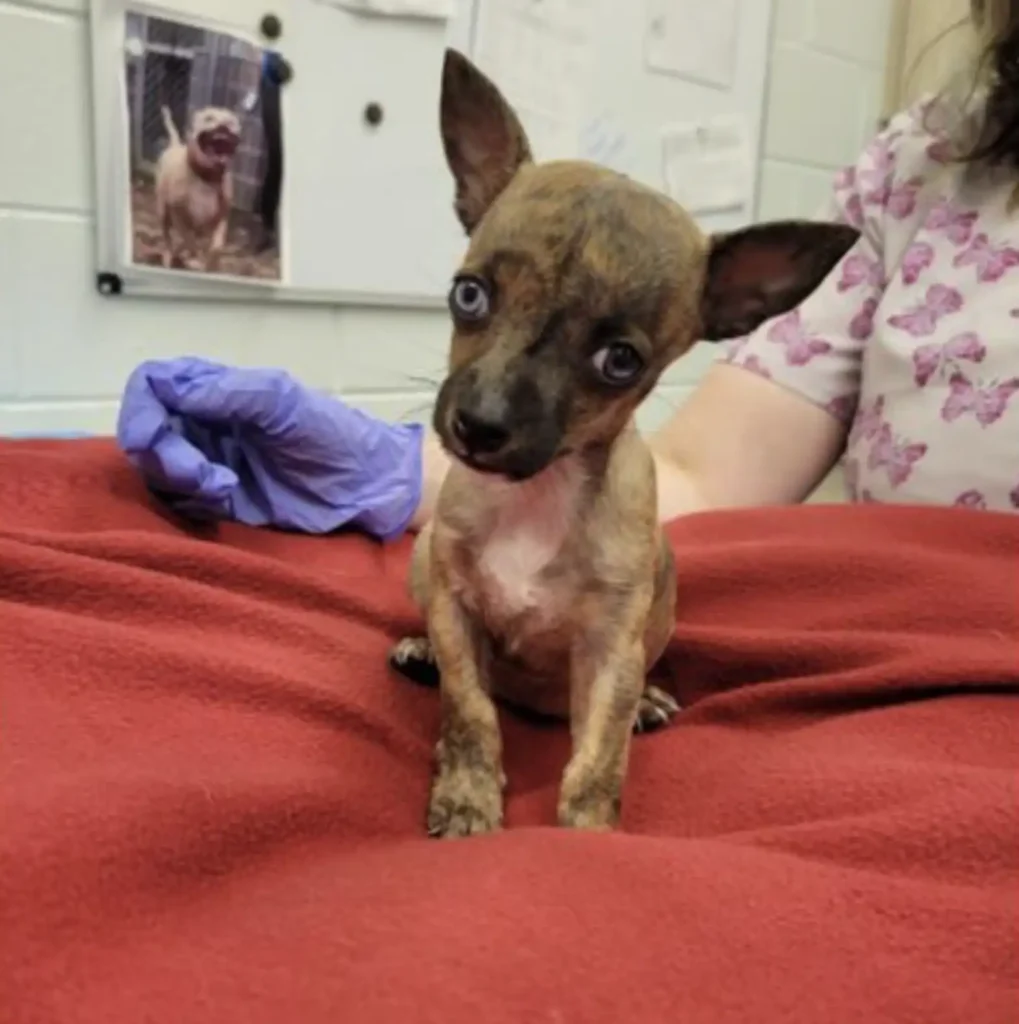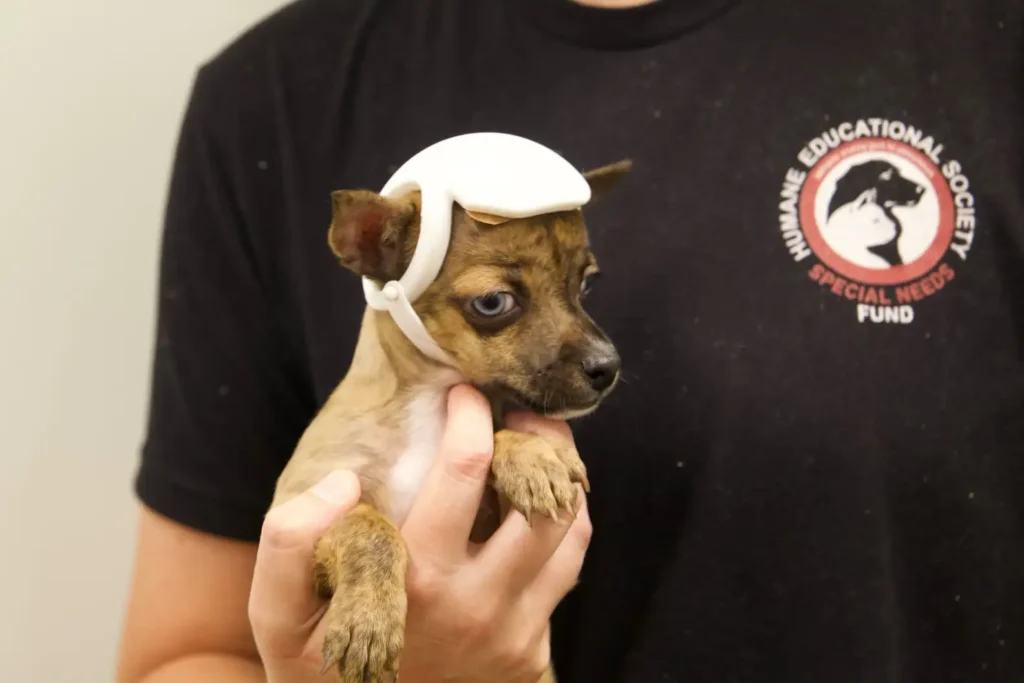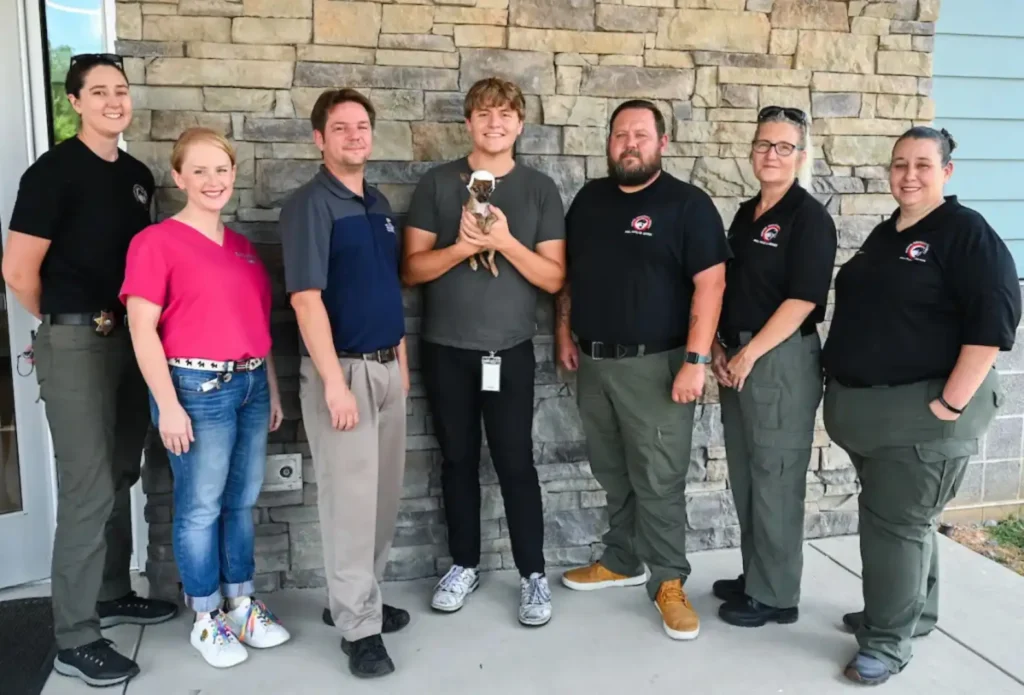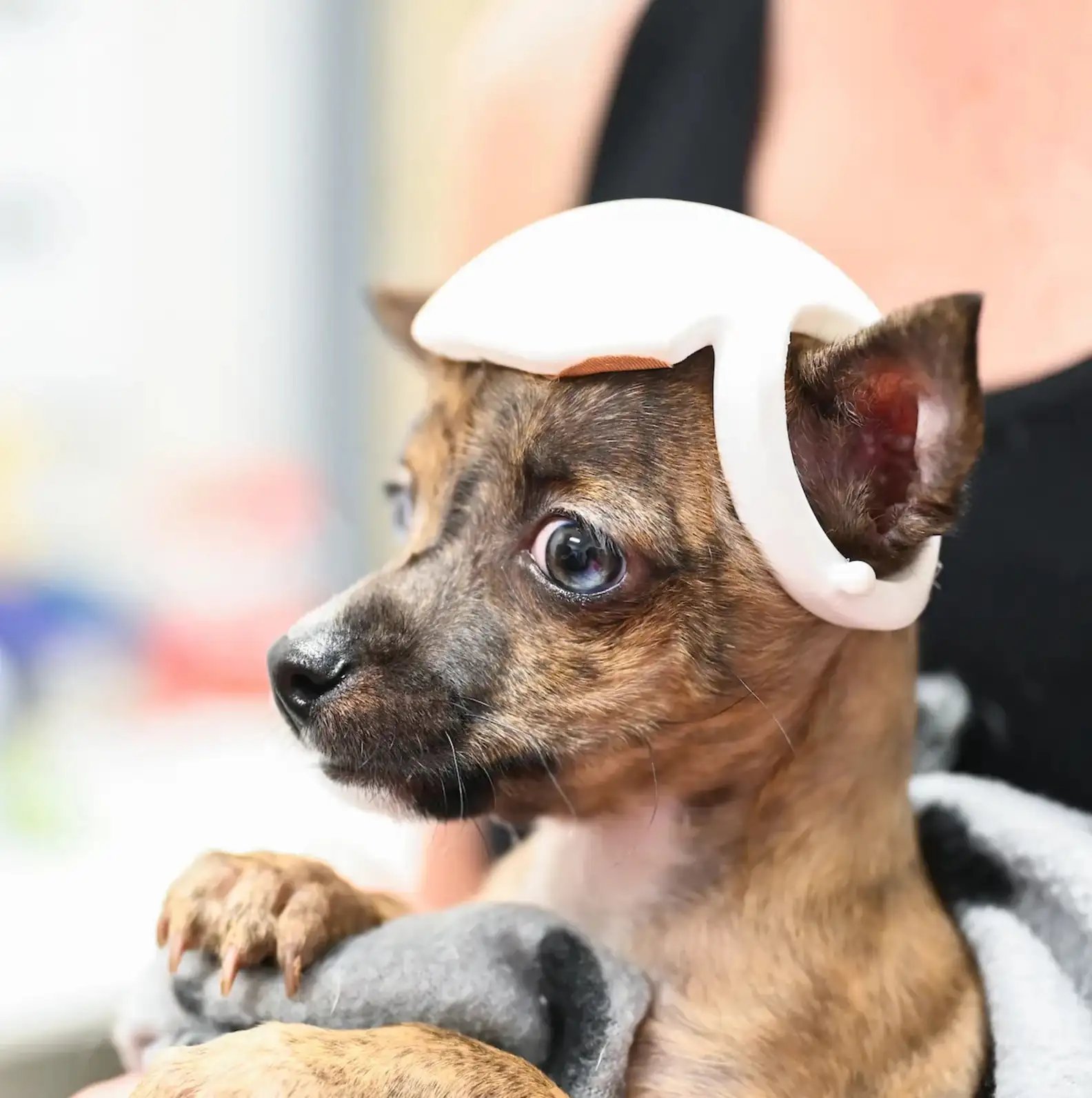“As soon as I saw Niblett’s cute little face, I said, ‘We’ve got to help.’”
When a tiny Chihuahua named Niblett arrived at the Humane Educational Society (HES) a couple of weeks ago, the shelter staff were instantly charmed by him. Weighing just over 2 pounds, Niblett was not the first Chihuahua to come through their doors, but he had a special quality that set him apart.
Beyond his endearing personality, Niblett was found to have a rare medical condition. Further tests revealed the extent of his health issues.
“It soon became evident that Niblett had a serious condition: hydrocephalus, or ‘water on the brain,’ which caused a soft spot on his skull that had not fully fused,” HES noted in a press release. “This condition made him extremely vulnerable to even minor injuries, posing a significant threat to his life.”

The dedicated staff at the Humane Educational Society quickly began brainstorming ways to protect Niblett’s fragile skull. Given his small size and unusual condition, it was a complex challenge, but officer Leigh Stacy came up with an innovative solution.
“Officer Leigh Stacy proposed that Niblett might need a protective cap,” HES explained.
Dr. Samantha Blair from HES endorsed this idea and reached out to the University of Tennessee at Chattanooga’s College of Engineering and Computer Science for support. Associate professor Dr. Trevor Elliot and recent graduate Connor Mackey were immediately intrigued by Niblett’s case.
“Seeing Niblett’s sweet little face made it clear that we had to do something,” Dr. Elliot remarked.

Mackey, who’d had extensive experience in 3D printing, knew just how to help. First, they’d have to measure Niblett’s skull.
“The team collaborated with Volkswagen’s Justin Stephens to scan Niblett’s head and create a 3D image,” HES wrote.

Once they had measured Niblett’s skull, the team set to work on designing the ideal cap. They quickly arrived at a solution that worked perfectly.
“They developed several iterations of protective headgear, ultimately designing a football helmet-like structure that Niblett adapted to very well,” HES reported.
A few days later, Niblett tried on his custom 3D-printed helmet for the first time, and it fit him flawlessly. He has been wearing it consistently since, and his caregivers are already noticing positive changes.
“‘We believe he’s in the best possible environment to achieve a good outcome and enjoy the longest, happiest life possible,’” said Sarah Callahan, HES’ director of veterinary services.

Niblett is still on the hunt for his perfect forever home, but he is surrounded by plenty of love at HES’ headquarters. His devoted caregivers are more than happy to care for him as long as needed and take great joy in watching him flourish.
“As Niblett continues his journey, he stands as a testament to the remarkable efforts of individuals and organizations committed to providing a brighter future for those in need,” HES shared. “It’s truly amazing to see how innovative techniques can help save a dog’s life.”
